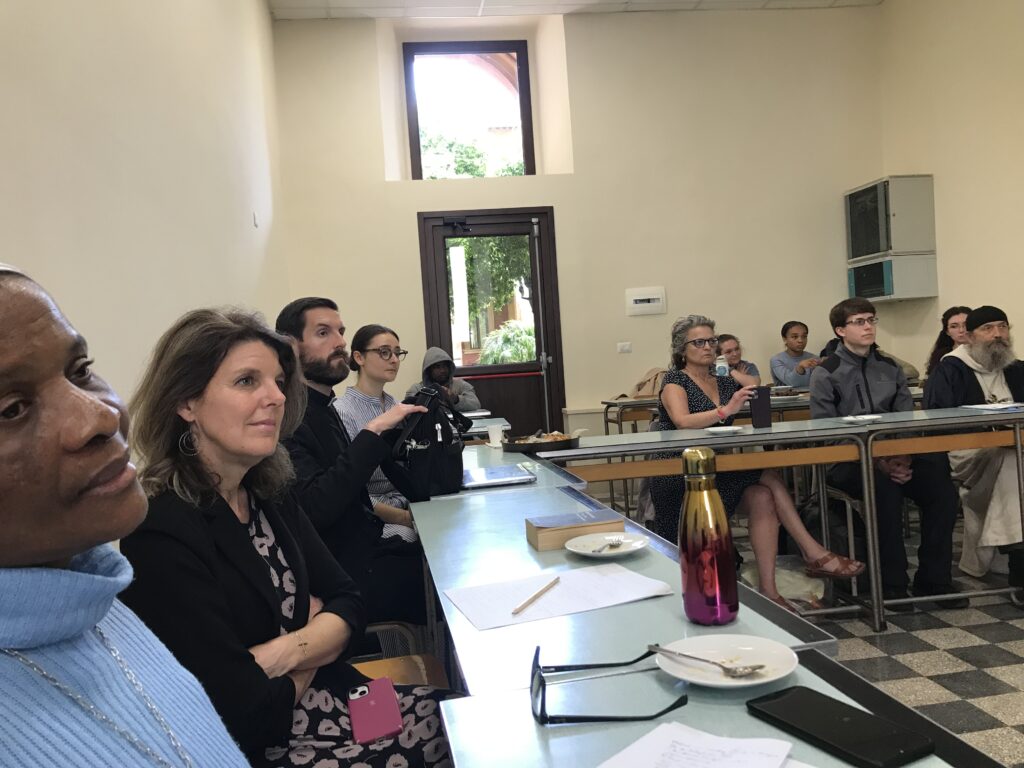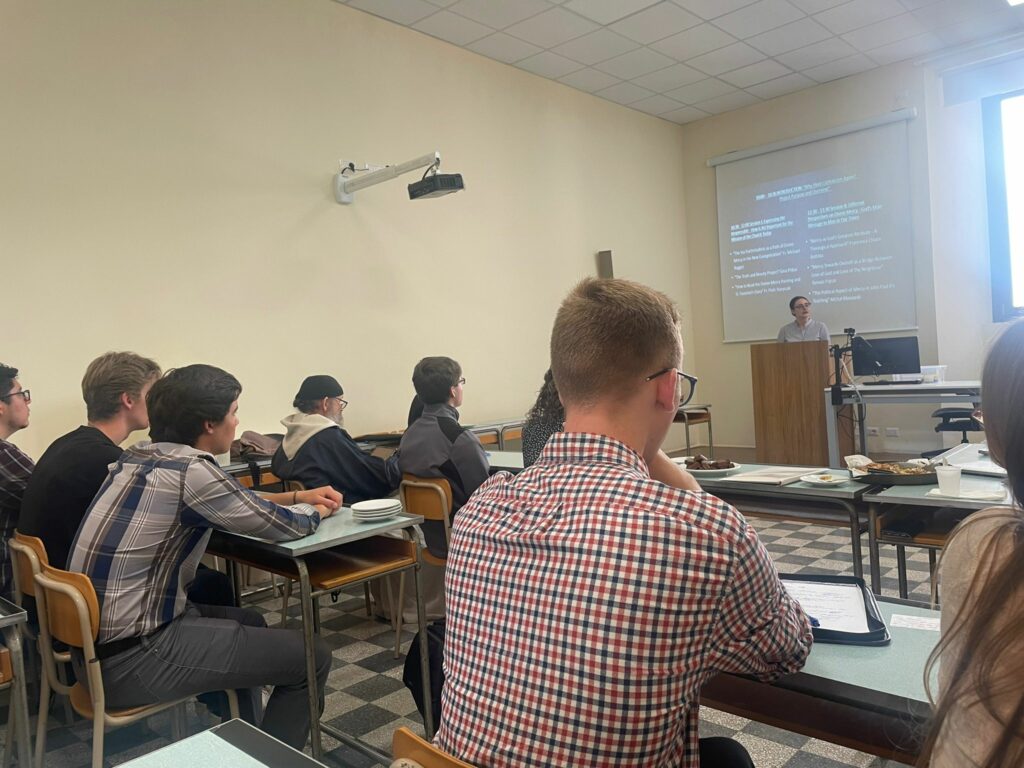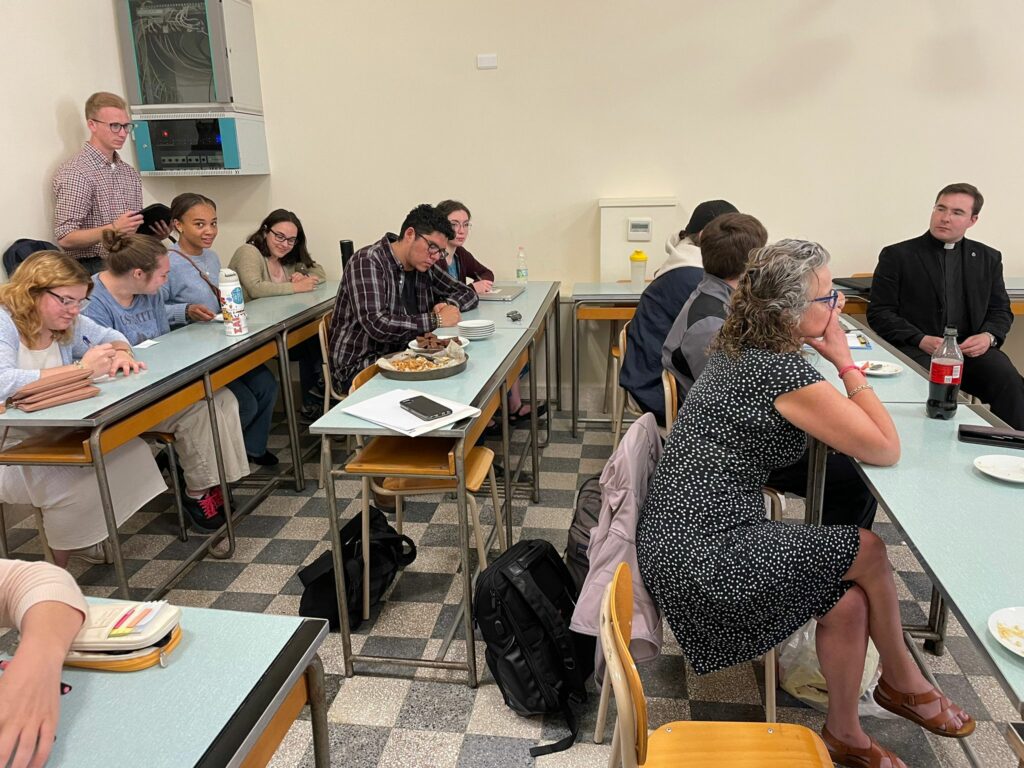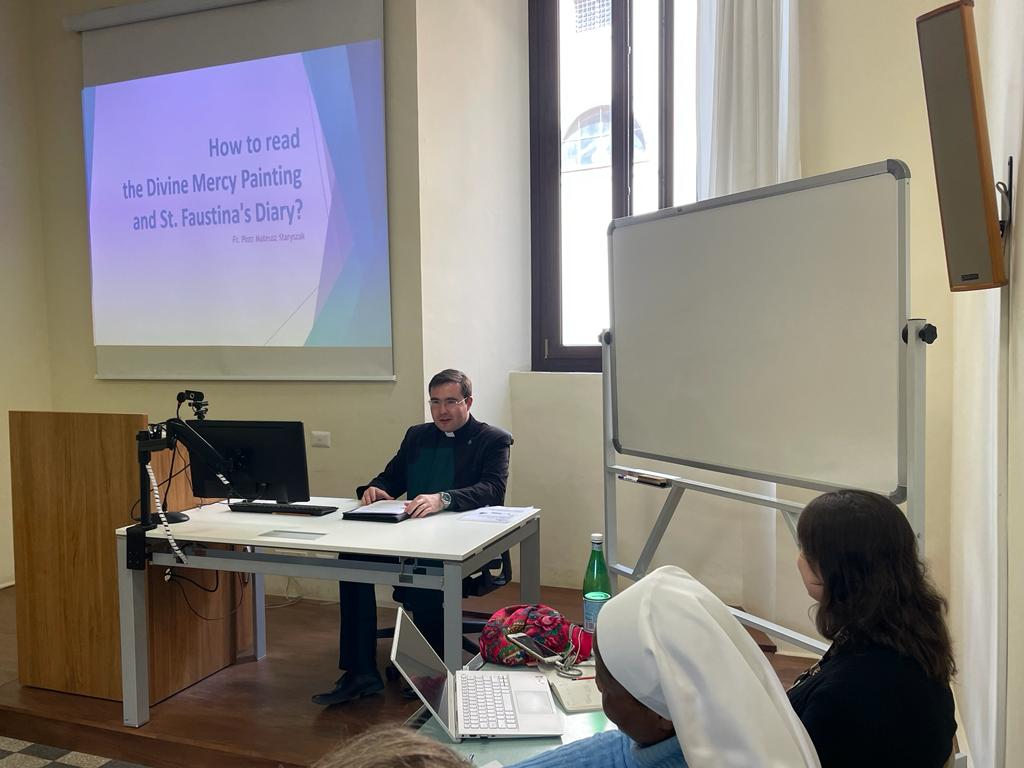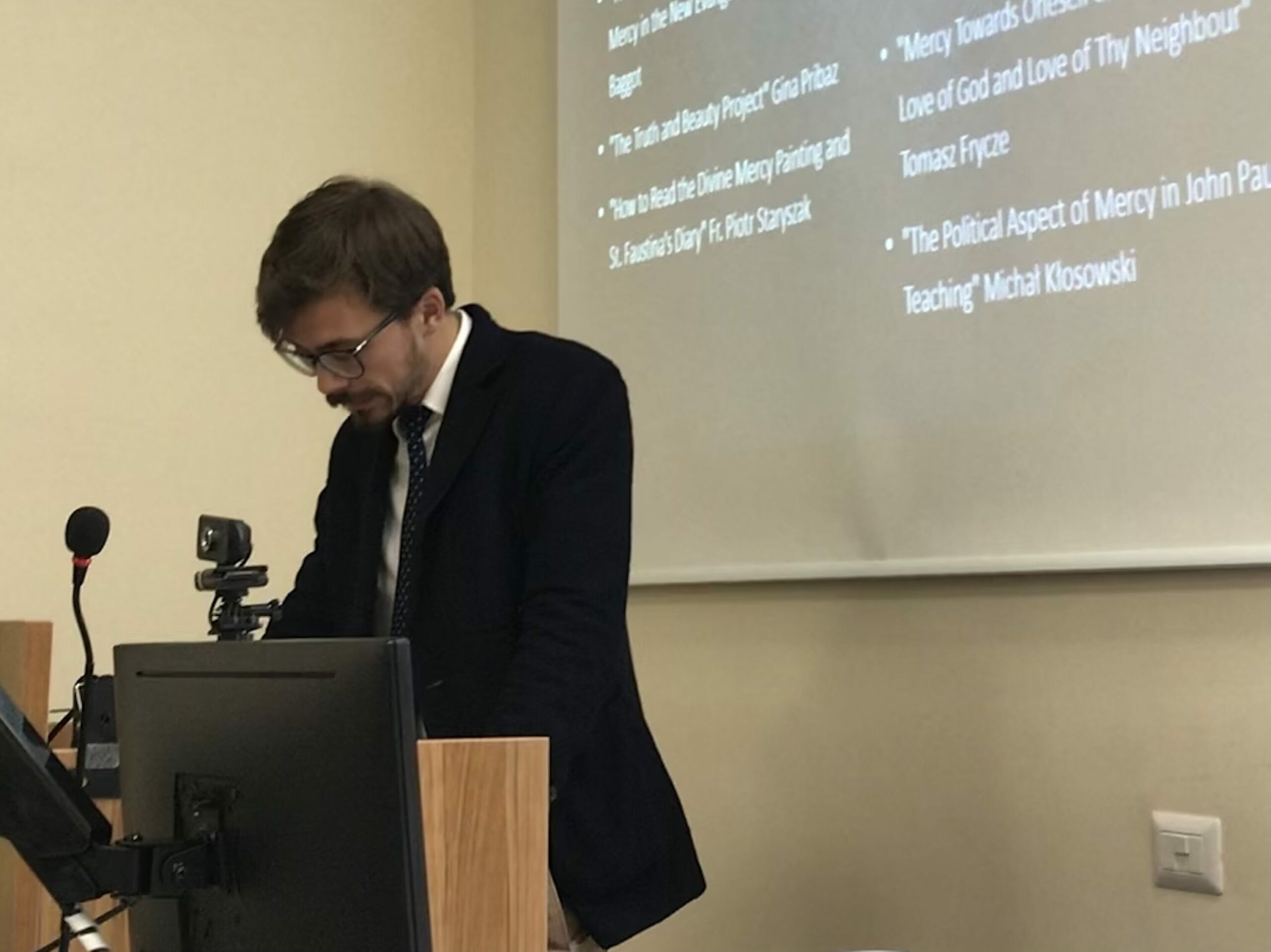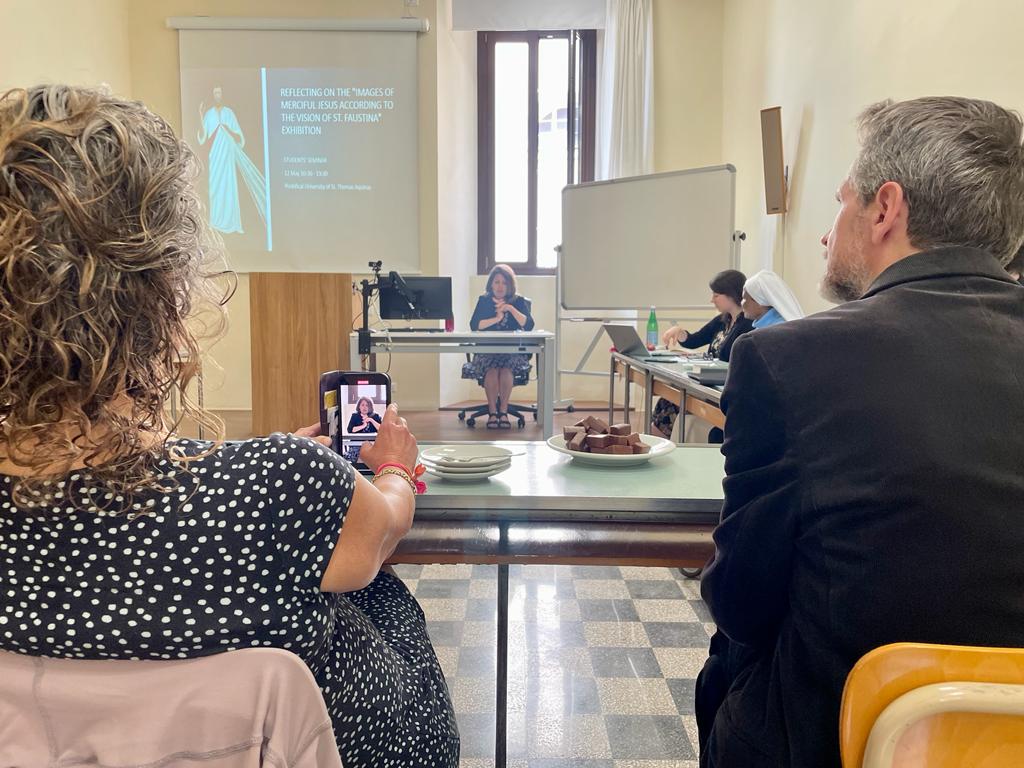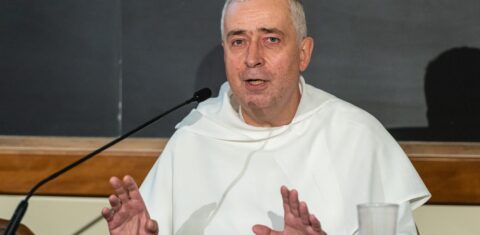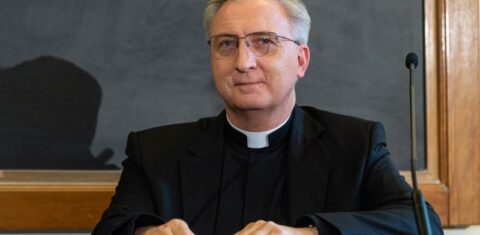In the first session, Fr. Michael Baggot, a student of the Angelicum, lecturer at the Ateneo Pontificio Regina Apostolorum, and experienced tour guide at the Vatican Museums shared his experience of encounters with people of different than Christian cultural and religious traditions as well as with those who might consider themselves hostile to the Church’s message, and accompanying them on the path of discovering the most beautiful pieces of Christian art. Gina Pribaz, a student of the Angelicum’s Spirituality Institute presented the Truth and Beauty Project – an immersion program for American youth who thanks to discovering Christian art and culture in Rome have a chance to unravel the roots of their Christian identity and reawaken their faith. Fr. Piotr Staryszak, an alumnus of the first edition of the Angelicum’s “JP2 Studies” program and a doctoral student at the Santa Croce University introduced the audience to an interpretation of St. Faustina’s Diary and of the Divine Mercy Image from the perspective of dogmatic theology. He showed the connection of some of their elements with the Mysteries of Christ, such as the Incarnation, Passion, Death, Resurrection and, more broadly, the Paschal Mystery, and thus also their connection with the Magisterium of the Church.
The second session of the seminar was devoted to different perspectives of looking at Divine Mercy. Francesca Chiara Battista, an exchange student at the Thomistic Institute, took a theological perspective, drawing from the Holy Scripture, the Tradition of the Church and the thought of St. Thomas. Tomasz Frycze, this year’s Saint Nicholas Foundation scholarship holder, studied the question of how the message of God’s endless Mercy influences the relation of a person to oneself and the other (also from a perspective of psychology as a tool for spiritual and interpersonal heeling). Michał Kłosowski, another student at the St. John Paul II Institute of Culture, devoted his talk to the political aspect of Mercy in the teaching of the Polish pope.
A long round of discussion that followed focused on two main themes. Firstly, students discussed the complicated history of the depictions of Merciful Jesus created according to Sister Faustina’s instructions. Students from Lithuania and Poland shared their knowledge, creating a fascinating map of the history of the image and devotion to Divine Mercy. The second issue that led to a lively discussion was the relationship between God’s infinite Mercy and His Justice. “Many believers have difficulties understanding and accepting the fact that the Infinitely Merciful God will also be our judge and that hell is a real possibility” said Fr. Marija Elijas Cerniauskas, a Lithuanian doctoral student at the Angelicum. People of today’s culture easily reject the truth about responsibility for one’s own actions. In many ways it is easier to choose from an existing variety of alternative philosophical models which give simple answers to difficult questions.
On the other hand, there are also those who, attached to the vision of God justly separating saints from sinners at the end of time, feel scandalized by the constantly emphasized truth about Divine Mercy. They treat it as a kind of fashion that has come to the Church quite recently and has to pass. “So how do we draw to Christianity – which is not an easy recipe for happiness – people who are lost, suffering and searching, telling them the whole truth, not just a part of it?” – asked Anna Brojer, a student of the Institute of Spirituality, moderating the seminar. “The answer is to start from the beginning, with a proper anthropology. People need to be reminded once again of who they are: that they were created out of love, for great things. They need to be reminded of how powerful their dignity is, and that with this dignity comes great responsibility” – said Sister Beatrice Okoro, another doctoral student at the Angelicum. The students agreed that the retreat model practiced by the Jesuits based on St. Ignatius’s of Loyola “Spiritual Exercises” is an interesting and powerful direction. It begins with the Foundation – showing man as God sees him, and then introducing him to other truths of faith, including the truth about the destructive power of evil and sin, as well as the truth about the Father’s mercy.
The students’ seminar was held under the auspices of the Angelicum’s Student Association – ASPUST, the St. John Paul II Institute of Culture and the Saint Nicholas Foundation.
summary: Anna Brojer
photos: Anna Brojer, Michał Kłosowski


